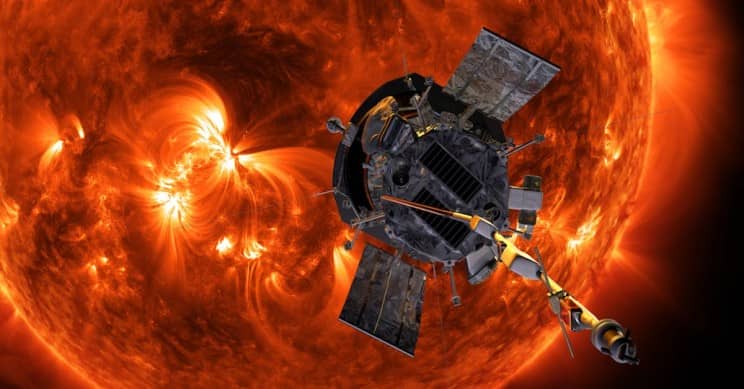NASA’s Parker Solar Probe will set on its journey in 10 days. The probe is destined for the sun and will skim the atmosphere of the sun to fly close to the star. This will make it the closest encounter to the sun. The satellite will launch on 11th August 2018, and the Parker Solar Probe will become the humanity’s first ever mission to visit a star. The probe will be enduring some of the most extreme conditions which have ever been experienced by a spacecraft. Protecting the onboard scientific equipment from the hostile conditions require very sophisticated and robust cooling systems.
The Parker Solar Probe will provide the first close up view of a star as it enters the Sun’s atmosphere. From a distance of just a few solar radii away the probe will be able to directly observe the sun’s atmosphere and investigate cosmic anomalies which are impossible to witness from the earth. It is an autonomous system which will be launched and will provide information about the star at the center of our solar system. The most significant challenge will be to keep it cool. Johns Hopkins Applied Physics Lab Mary Kae Lockwood said, “Our solar arrays are going to operate in an extreme environment that other missions have never operated in before.”
The probe had a narrow profile and situated in front of most of the craft is a massive 2.5-meter wide heat shield which keeps a majority of the spacecraft out of direct line from the sun. The probe will follow a highly elliptical orbital path which ensures the satellite will not be exposed to the sun long enough to heat it up drastically. The Parker Solar Probe will be en route to the sun in the next few months. The mission will last for seven years, and in the meantime, it will make 24 close range passes around the sun. NASA claims, “Parker Solar Probe will swoop to within 4 million miles of the sun’s surface, facing heat and radiation like no spacecraft before it. To get there, it takes an innovative route.”
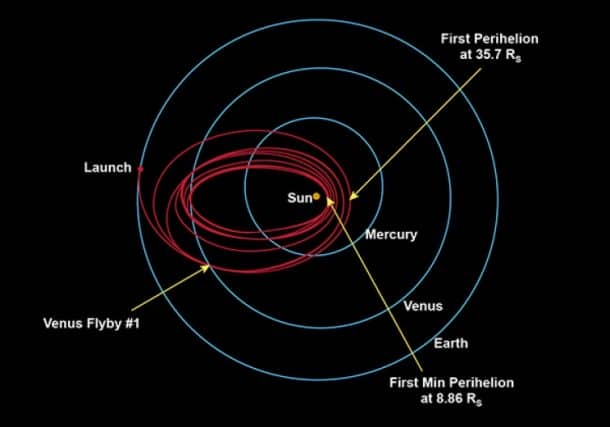
The probe will come seven times closer than any spacecraft before. The solar probe will enter the sun’s coronal plasma, which is an atmospheric layer comprising an ionized gas of electrons, protons, and heavy ions. The Parker Solar Probe will be entering a space where the atmosphere will reach over 500,000 degree Celsius. The atmosphere 6 million kilometers above the sun’s surface is rather thin, and a minimal amount of energy will be transferred into the probe. The temperatures surrounding the probe may be hundreds of thousands of degrees, but there are few particles which can transfer the heat at all. Inside corona, the minimum amount of heat will be moved into the spacecraft itself.
To take on the blunt heat of the sun the first line defense is Parker Solar Probe innovative heat shield. It is comprised of an 11-cm thick carbon foam core which is sandwiched between two panels of the superheated carbon-carbon composite. The foam core is 97% air, which makes it extremely light while minimizing heat conduction. The heat shield weighs approximately 73kg, which is almost the average weight of the average woman. A minimal amount of heat will be absorbed from the atmosphere, and the most significant concern is to control the amount of sunlight which will be incorporated as heat by the spacecraft.
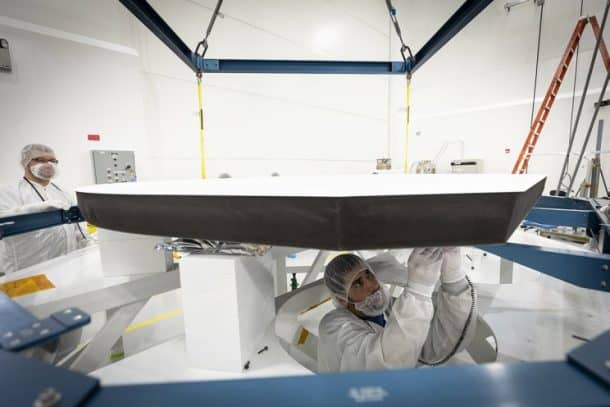
The side of the shield which will be facing sun has a highly reflective carbon material which is intended to deflect as much energy as possible back towards the sun. The shield is painted with a specially formulated white coating capable of reflecting most of the rays. The material is also designed in such a way that it doesn’t deteriorate or crack due to the extreme heat of the sun. Lockwood said, “We learned a lot about solar array performance from the [APL-built] MESSENGER spacecraft, which was the first to study Mercury. In particular, we learned how to design a panel that would mitigate degradation from ultraviolet light.”
The heat shield will reach temperatures nearly 1000 celsius however the rest of the aircraft behind the shield will be able to maintain room temperature. NASA claims, “The eight-foot-diameter heat shield will safeguard everything within its umbra, the shadow it casts on the spacecraft. At Parker Solar Probe’s closest approach to the Sun, temperatures on the heat shield will reach nearly 2,500 degrees Fahrenheit, but the spacecraft and its instruments will be kept at a relatively comfortable temperature of about 85 degrees Fahrenheit.”
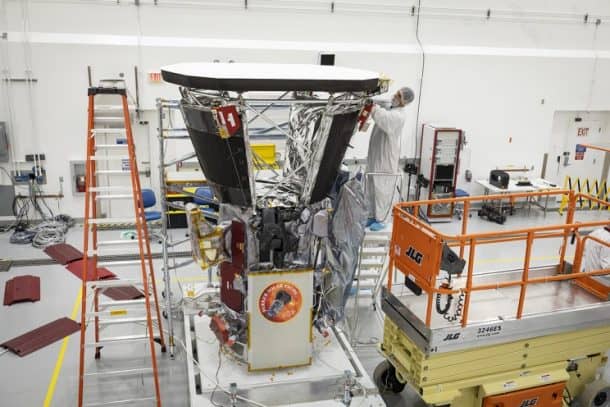
It is essential to prevent the heat from reaching the sensitive equipment, and this requires extensive consideration while not only selecting the material used but also how it should be mounted to the spacecraft. To prevent heat from transferring through the probe, the thermal protection system is connected to the truss of the Parker Solar Probe at 6 points. The thermal shield is very effective against the extreme light of the sun, but it is not designed to protect the whole craft. Other system’s like probe’s solar array should be designed in such a way that it can withstand direct sunlight from a few solar radii away.
NASA’s Parker Solar Probe is dependent on the sun. The primary mission is to investigate a star at an extremely close range. For the most of the journey, the Parker Solar Probe’s solar array will extend in front of the spacecraft which is directed towards the sun. A small portion of the panels always stays exposed to the sun to provide the necessary power to the onboard systems. NASA describes, “Parker Solar Probe is powered by two solar arrays, totaling just under 17 square feet (1.55 square meters) in the area. They are mounted to motorized arms that will retract almost all of their surface behind the Thermal Protection System – the heat shield – when the spacecraft is close to the Sun.”
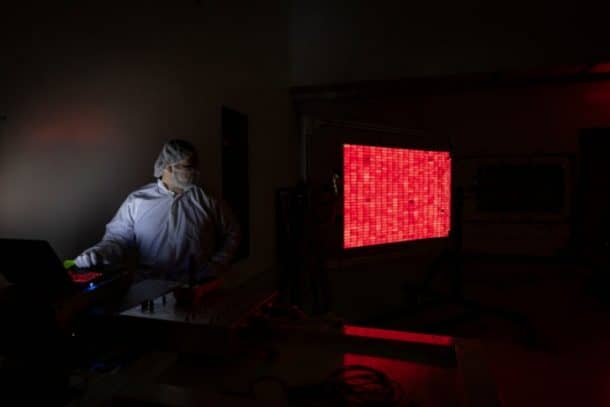
Using a fixed solar array on the close approach to the sun, the solar panels will gather enough electricity to destroy themselves with heat which is absorbed from the sun itself. Andy Driesman, project manager from the Johns Hopkins Applied Physics Laboratory in Laurel, Maryland said, “Unlike solar-powered missions that operate far from the Sun and are focused only on generating power from it, we need to manage the power generated along with the substantial heat that comes from being so close to the Sun,”. “When we’re out around the orbit of Venus, we fully extend the arrays to get the power we need. But when we’re near the Sun, we tuck the arrays back until only a small wing is exposed, and that portion is enough to provide needed electrical power.”
Several sensors of almost the size of a cellphone are mounted on the body of the spacecraft. If any detector sense direct sunlight, an alert is sent to the central computer of the spacecraft before the subsequent corrections are made to realign the craft and keep the rest of the probe safe from the heat of the sun. This has to happen without any human intervention. Therefore, the central computer software has been programmed and tested to make sure all corrections can be made on the fly. To protect the Parker Solar Probe from melting in the sun’s atmosphere is a huge challenge which is backed by a lot of innovative technologies to bring the humanity closer. There is still a long way to go but there is indeed light at the end of the tunnel, and NASA plans on capturing it all.

